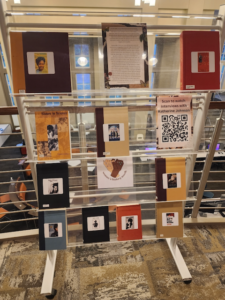With this display, we are celebrating the intersection between Blackness and womanhood, as the intersection between February, Black History Month, and March, Women’s History Month, approaches. Many of the stories that are shared during both months are stories that are often heard; therefore we compiled a collection of lesser known narratives. Intersectionality is often ignored in conversations about the people who dedicated their lives to a better future, and we wanted to make sure that the women who are often forgotten were recognized.
We shed light on chronicles of scientific discovery, poetry, and theatre, as well as biographies of those who fought for justice that are often forgotten about. One such story is that of Henrietta Lacks, whose cells were taken without her consent and used to create the very first immortal human cancer cells grown in culture, while her family had no knowledge of this for decades. Even today, her family has still not received any compensation even though many pharmaceutical companies are still profiting off of her stolen cells. Another is the narrative of Claudette Colvin, the then 15 year old who said “No!” to moving bus seats nine months before Rosa Parks, but was not chosen as the face of the Montgomery Bus Boycott due to her age and assumed unreliability. Amongst these stories of Black women fighting for their justice are also the stories of Black women who created art, such as the biographies of Lorraine Hansberry and Audre Lorde, and Black women who made amazing, groundbreaking discoveries, such as the biographies in Hidden Figures and Sisters in Science. At Oxford, we even have access to interviews done with Katherine Johnson, the mathematician and computer scientist of Hidden Figures, to watch her talk about her own discoveries and the impact she had at NASA. We hope you are able to appreciate the stories that are not often told, and help in ensuring that these women receive the recognition that they deserve.
Post and display by:
Makalee Cooper and Emma Jinright


